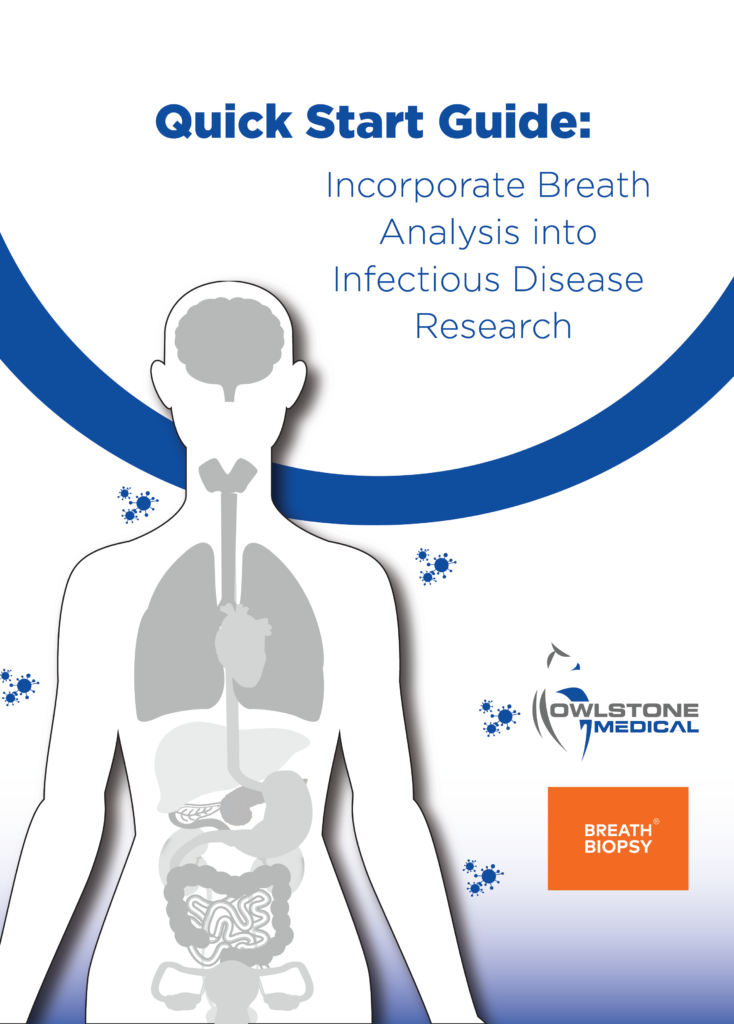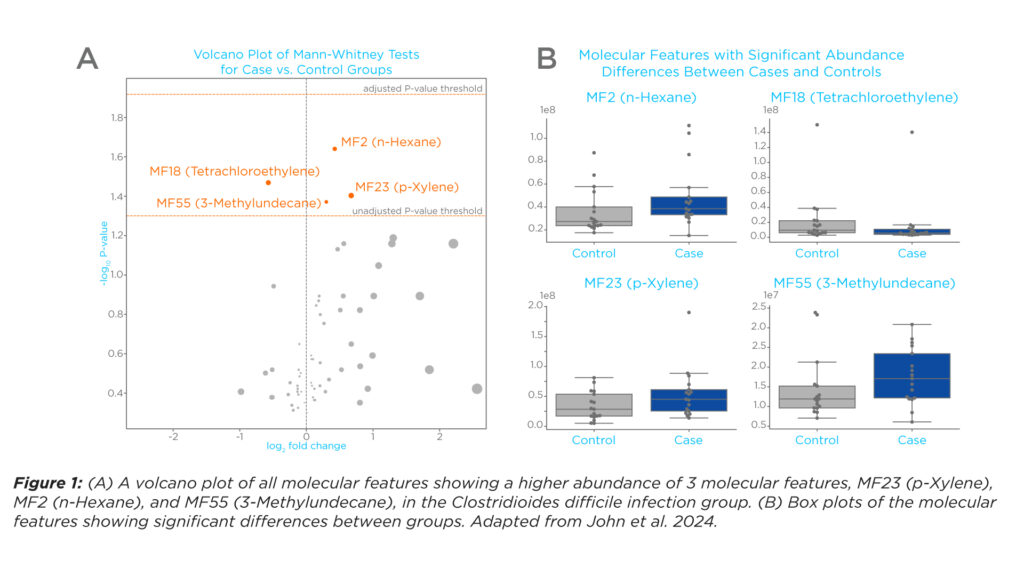Breath Analysis for C. diff Infection Diagnosis
| Publication information: John TM, Shrestha NK, Hasan L, Pappan K, Birch O, Grove D, Boyle B, Allsworth M, Shrestha P, Procop GW, Dweik RA. Detection of Clostridioides difficile infection by assessment of exhaled breath volatile organic compounds. J Breath Res. 2024 Mar 28;18(2). doi: 10.1088/1752-7163/ad3572
Disease Area: Clostridioides difficile infection (CDI) Application: Diagnosis of CDI Sample medium: Breath Analysis approach: Thermal desorption-gas chromatography-mass spectrometry (TD-GC-MS) Summary: The study involved analyzing breath samples from patients with and without CDI to identify volatile organic compounds (VOCs) associated with the infection. The researchers suggest that breath analysis could serve as a potential diagnostic tool for CDI, although further research is needed to validate and enhance the accuracy of this approach. |
Clostridioides difficile infection (CDI) is a leading cause of hospital-acquired diarrhea that poses challenges in timely diagnosis and management. Traditional diagnostic methods for CDI include enzyme immunoassays and PCR (polymerase chain reaction), however these suffer from limitations. Enzyme assays have variable sensitivities, and PCR is unable to differentiate between infection and colonization. Furthermore, both require stool samples which can only be collected infrequently. There is therefore a clinical need for a rapid, on-demand test to accurately diagnose CDI.
Investigating VOCs associated with CDI
The primary objective of this study was to investigate the potential of VOCs in exhaled breath as biomarkers for detecting the presence of CDI. By analyzing breath samples from patients with and without CDI the researchers aimed to identify specific VOCs associated with the infection and develop classification algorithms to accurately differentiate between CDI patients and controls.
Breath samples were collected using the ReCIVA® Breath Sampler and analyzed using TD-GC-MS. Principal component analysis (PCA) was used to visually check for any underlying structure in the data. Paired testing was performed using the Wilcoxon sign-rank test and the Mann-Whitney U-test was used for unpaired group comparisons.
34 samples were analyzed in total, with 17 from patients with CDI and 17 from patients without. In total, 65 VOCs were detected and 11 showed evidence of association with CDI. The most significant of these were 2-Ethyl-1-hexanol, p-Xylene, Isophorone, and Tetrachloroethylene.
Nine tentatively identified VOCs were selected by a quadratic discriminant analysis (QDA) modeling method. The model was able to distinguish between CDI cases and controls with a sensitivity of 0.71, a specificity of 0.76, and a mean area under the receiver operating characteristic curve (AUROC) of 0.72.
Several of the VOCs that showed significance have the potential to act as breath biomarkers of CDI
CDI patients appeared to have higher levels of VOCs related to lipid peroxidation in their breath than controls, demonstrated by elevated levels of n-hexane and 3-methylundecane. Lipid peroxidation has been recorded to occur during colonic damage caused by CDI. Further validation would be required to confirm that the source of these VOS was not environmental in nature.
Some species of Clostridioides have been reported to metabolize tetrachloroethylene. Therefore, the lower levels of tetrachloroethylene in CDI patients may have been related to this metabolic process.
The advancements in breath analysis for CDI diagnosis have significant implications for infectious disease management. The development of classification algorithms based on VOC profiles opens avenues for the implementation of breath analysis as a routine diagnostic tool in clinical settings and highlights the potential of breath analysis as a non-invasive and efficient diagnostic approach. Future research should focus on validating these findings in larger cohorts and refining the classification models to enhance their accuracy and clinical utility.
To find out more about applying breath analysis to your infectious disease research, follow the links below to get in contact with us.
Quick Start Guide: Everything you need to know about how breath analysis can be used in infectious disease research


